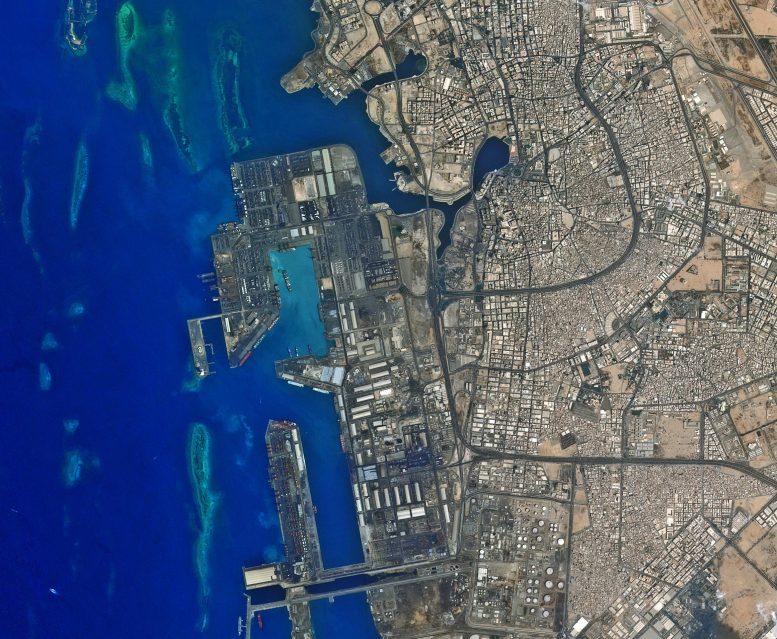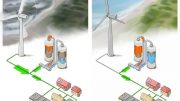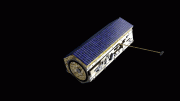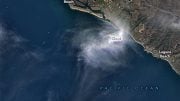
The city of Jeddah’s seaport on Saudi Arabia’s western coast is pictured in this image from the Kompsat-2 satellite. The second largest city in the country, Jeddah has a population of over five million people. The city is a gateway to Islam’s holiest city of Mecca, which lies about 60 km to the east, as well to the holy city of Medina, about 320 km north. Near the bottom of the image, the large circles are the tanks of an oil refinery. The oil industry comprises about 45% of Saudi Arabia’s gross domestic product, and 90% of export earnings. Saudi Arabia is the world’s number-one oil exporter, and therefore plays a major role in the global energy industry. Its policies on the production and export of oil, natural gas and petroleum products have a major impact on the energy market, as well as the global economy. Credit: KARI/ESA
Demand for oil has collapsed due to the coronavirus pandemic just as supply is about to strengthen because of a dispute between Russia and Saudi Arabia. As a result, oil prices have sunk to levels not seen since 2002.
As storage tanks around the world fill up, ESA-backed companies are using satellite data to map the flow of oil across the globe through shipping channels and pipelines in almost real-time. The analysis allows producers, traders, and governments to support the economy by taking informed decisions about the fuel that powers industry and heats homes.
Crude oil is pumped from underground reservoirs into storage tanks that can be seen from space. These cylindrical tanks have lids that float on top of the oil, to minimize any loss through evaporation and reduce the risk of toxic, flammable gases escaping.
Earth observation satellites circle the planet carrying optical cameras that can spot these tanks and measure their diameters.
Such satellites carry synthetic aperture radar instruments that can detect the rise and fall in the height of the lids. This enables the volume of oil flowing into and out of the facility to be calculated.
Some 65% of the world’s crude oil is traded by sea. Satellites can pick up the signals from automatic identification systems carried aboard large ships carrying oil, which enables people to track them as they load up with oil and transport it from one port to another.
OilX, a digital oil analytics company founded in London in 2018 with ESA support, is using satellite data to map the flow of the world’s oil for customers including traders, government departments and investment banks.
Florian Thaler, chief executive and co-founder of OilX, says: “The oil trader’s edge is no longer boots on the ground but eyes in the sky. We combine oil analytics, satellite technology and machine learning to deliver augmented intelligence to commodity markets. OilX is the world’s first digital oil analyst.”
Other companies are using satellite data to gain insight into when new oil production is likely to come onstream.
Gareth Morgan is founder and director of Terrabotics, which was founded in London in 2014 to monitor global natural resources supply chains throughout their lifecycles, and which has received ESA funding and business support.
The company uses data from Earth observation satellites to watch the construction of oil and gas wells, waiting for tell-tale signs that they are about to start production. It provides market intelligence to commodities traders, competitive intelligence to other companies working in the region and objective reporting to investors.
“Radar is a huge asset to us because of its global coverage and it works even through clouds and is quite robust to all weather conditions. We also use optical and infrared imagery to uniquely identify objects,” he says.
“It is about providing objective information at a time of uncertainty. Using satellite data when you are remote and cannot access sites is very useful. We can give insight into what other people are doing – and even what they are not doing.”
Nick Appleyard, Head of Downstream Business Applications at ESA, says: “ESA is helping to support the economy, as insights gleaned from space can guide global industries and help businesses to improve the speed, accuracy, and efficiency of their decisions.
“We can see oil storage filling up around the world, because we have brought more oil out of the ground than we want to use. That means the price of oil has dropped and we should stop drilling for more. But that only happens accurately if the traders can see what is happening. The creative use of space data gives traders the information they need.”









Be the first to comment on "Satellites Map the Global Flow of Oil – Demand Has Collapsed Due to the Coronavirus Pandemic"